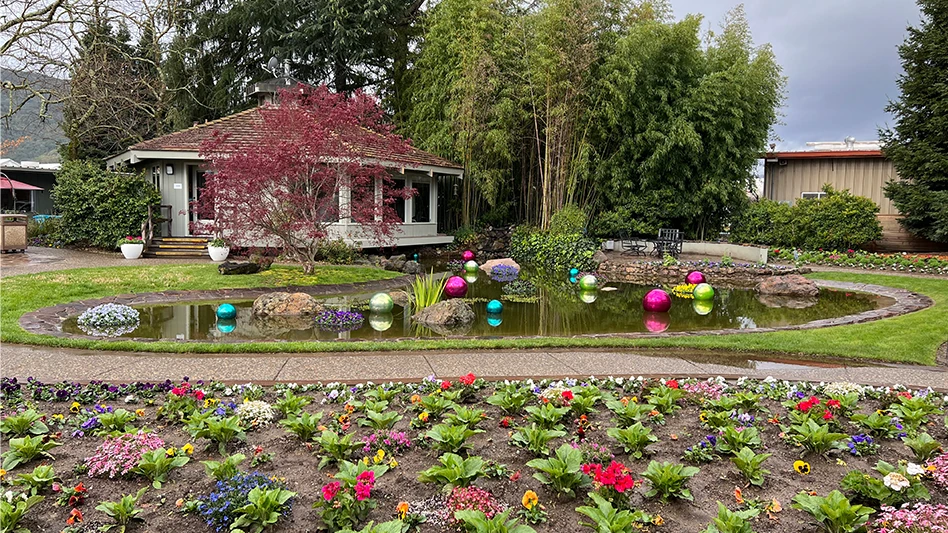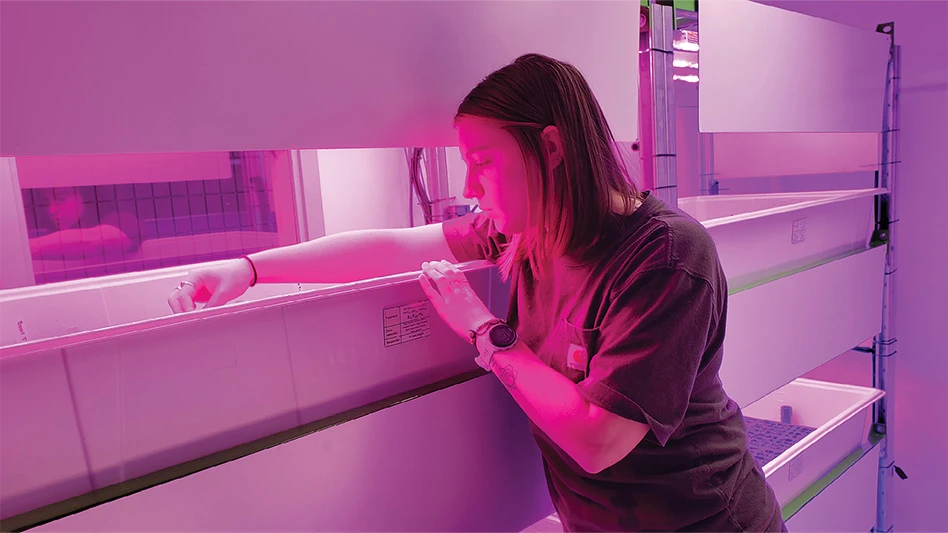


Delta Pro Pansies
Syngenta has upgraded its pansy offerings with the new Delta Pro series. “This is our biggest launch of the year,” said Caroline Phillips, marketing specialist. “This has been in the works for years so we’re very excited.”
Delta Pro is known for its uniformity of production, making them easily programmable for both spring and autumn sales. Its early and extremely uniform flowering within varieties and across the series take the guesswork out of planning and production.
The compact and heavily branched plants fill pots quickly and require few PGRs, and can all be grown with the same protocol. They’re ideal for high-density finishing and great for packs and combos, Phillips said. “We’re going for a totally programmable lineup,” Phillips said.
Short, non-stretching flower stems hold large flowers upward, providing long-lasting and impactful retail displays. The new line features 16 individual colors, with many clear options, including seven solids, eight blotches and the novel Lavender Blue. Delta Pro grows to 6-8 inches wide and 4-6 inches high with a mounding habit.
The Delta Pro varieties at Spring Trials were treated with Chrysal Alesco foliar spray to avoid ethylene damage. This prevents shrinkage and premature dropping of buds, leaves and flowers.
The Delta Pro plant structure has been designed with a vigorous root system, particularly important during summer production, which allows for reliable autumn sales. The plants also feature a robust basal branching, quickly covering containers before putting on color. The powerful plant body, paired with durable peduncles, easily supports the large, 3-inch-wide blooms through transportation to the retail bench.
Packs finish in 4-5 weeks from transplant, large packs in 5-6 weeks, all the way up to 1.5 gallons finishing in 6-7 weeks.
With the introduction of Delta Pro, all previous Delta varieties now fall under the Delta Classic line.


Talavera Coleus
When it comes to foliage color, it’s tough to beat coleus. With its dramatic colors and interesting leaf shapes, coleus makes a statement in combos, alone in containers or en masse in the landscape. Syngenta’s new Talavera series offers striking colors, inspired by the bold and colorful Talavera pottery.
Mexican Talavera pottery, which dates back to the early 15th century, was introduced to Mexico soon after the Spanish invasion of Mexico. But when Mexico gained independence from Spain in 1821, Mexican Talavera pottery evolved to what consumers know today. New colors of glaze were introduced to accompany the traditional blue and white, including red, yellow, green, black and orange. And the motifs on the Talavera pottery also expanded to include native animals, flowers and traditional geometric designs from ancient Mesoamerican cultures.
Talavera coleus maintains its color and foliage patterns in both sun and shade conditions, says Caroline Phillips, marketing specialist at Syngenta. These non-bolting varieties have a bushy, mounding, upright habit. Finish them in quarts (2.5 quarts is ideal) and gallons (up to 3 gallons).
For a high-impact, big price-point item, try Talavera trees. According to Syngenta, propagation takes 3-4 weeks for a 105-cell plug and crop time varies depending on the finished container size. To produce a Talavera tree: do not pinch to maintain the apical dominance; start pruning early and often to encourage a straight, strong stem by taking off lower leaves; consider an intermediate pot size during production depending on the finished pot size; regularly shape and prune the lower branches; and begin with sprays of B-Nine WSG at 2,500 ppm to control growth, then move to Bonzi drenches starting at 0.5-2.0 ppm to maintain habit and growth.
Colors in the Talavera series are Burgundy Lime, Chocolate Mint, Chocolate Velveteen, Moondust, Pink Tricolor and Sienna.
Talavera is available to growers in 2023.


Succulent program
Syngenta is entering the succulent market with a new program, and also making moves into the tropical foliage market.
There are seven collections: Cotyledon, Crassula, Echeveria, Graptopetalum, Sedum, Senecio and Peperomia, along with options like pilea, kalanchoe, graptosedum and tradescantia. Most are ideal for 4-inch pots, with a few looking best in 6-inch hanging baskets like the Senecio Collection and the pilea.
Echeveria pulvinata Devotion and Echeveria pulvinata Red Velvet are fan favorites so far, Phillips said.
Latest from Greenhouse Management
- USDA fires experts on invasive pests, including Asian citrus psyllid, chilli thrips
- CEA Alliance celebrates bipartisan introduction of Supporting Innovation in Agriculture Act
- Dümmen Orange North America celebrating 25th anniversary in 2025
- CEA HERB Part 1: Best management practices for culinary herbs
- Lawsuit challenges new H-2 visa rules
- CEA HERB Part 2: A guide to increasing the sowing density of culinary herbs
- Illinois Landscape Contractors Association changes name to Landscape Illinois
- 2025 Proven Winners Horticulture Scholarship applications now open







